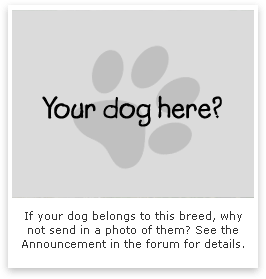
Lancashire Heeler |

|
OriginThe origin of the Lancashire Heeler isn't very well documented, but the general consensus seems to be that the Welsh Corgi ('Welsh Heeler'), which herded cattle from Wales to the Ormskirk area, met along their way the Manchester Terrier, which lead to the creation and beginning of the Lancashire Heeler. The breed has been known for about 150 years, and was used as a farm dog - able to herd and rat. The first Lancashire Heeler club was set-up in 1978 and KC recognition occurred in 1981. Character:The Lancashire Heeler is an intelligent little dog that loves people, children and games. He's bursting with energy which isn't surprising given the type of work he was bred for, and so will join in whenever there's fun to be had. Overexcited, he can nip in the heat of the moment, so basic obedience and good manners should be taught from an early age. While he is friendly with other canines, he may have a tendency to want to be 'top dog', which could be a problem in a multi-dog household. An alert, energetic chap, he makes for a great little companion. Exercise:The Lancashire Heeler is a lively little dog and should have regular brisk walks and play sessions in order to keep him both physically trim and mentally stimulated. Delighting to be in the company of family he is a good companion for activities such as walking in the park or countryside and camping. He is active and agile but does not require an inordinate amount of exercise. Whether on nice walks with plenty to discover or playing in the garden the Lancashire Heeler will be happy as long as he is with his owner. Care should be taken around small animals that are not part of his family due to his ratting background. Training:Nothing delights this dog more than playing games, he is therefore quite easy to train. His intelligence makes him a fast learner and once he understands what is required he will obey commands quickly and gracefully. Harsh physical and/or verbal reprimands should never be used as such methods will serve only to undermine his confidence and the trust, affection, and respect for his owner. Positive reinforcement training using treats and praise to mark work well done will achieve both performance and the strengthening of the bonds between dog and handler. Socialisation which will familiarise the dog with various people, places, situations, and other animals should begin early and should be a continuous process. This exposure will ensure that he grows to be an assured, well-mannered, socially acceptable adult. |
KC Group: KC, AKC, FCI recognized? Size: Height: Weight: Colour: Lifespan: Coat: Grooming: Health issues:
|




